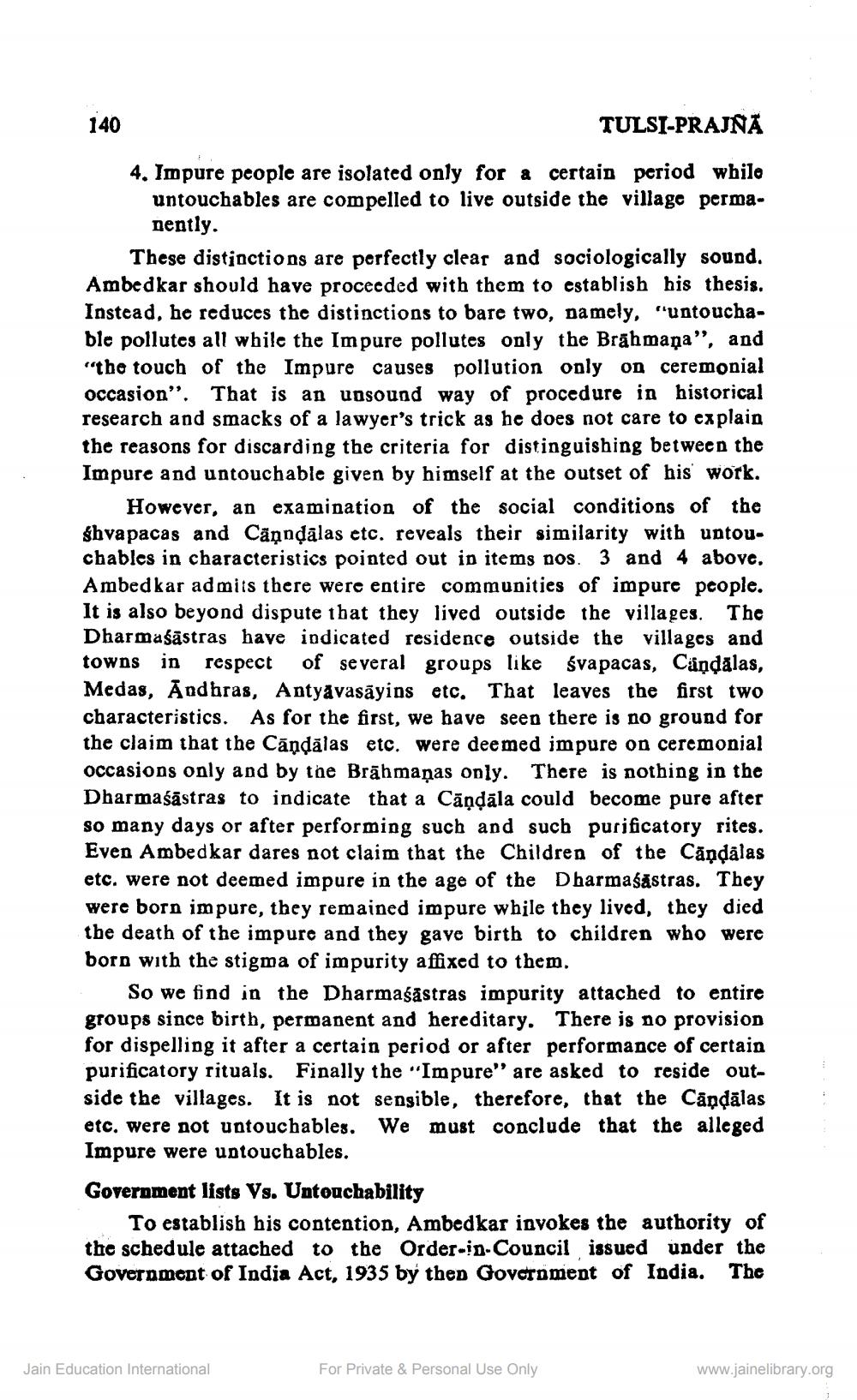________________
140
TULSI-PRAJNA
4. Impure people are isolated only for a certain period while
untouchables are compelled to live outside the village perma
nently.
These distinctions are perfectly clear and sociologically sound. Ambedkar should have procecded with them to establish his thesis. Instead, he reduces the distinctions to bare two, namely, "untouchable pollutes all while the Impure pollutes only the Brāhmaṇa", and "the touch of the Impure causes pollution only on ceremonial occasion". That is an unsound way of procedure in historical research and smacks of a lawyer's trick as he does not care to explain the reasons for discarding the criteria for distinguishing between the Impure and untouchable given by himself at the outset of his work.
However, an examination of the social conditions of the $hvapacas and Canndālas etc. reveals their similarity with uptouchables in characteristics pointed out in items nos. 3 and 4 above, Ambedkar admits there were entire communities of impure people. It is also beyond dispute that they lived outside the villages. The Dharmaśāstras have indicated residence outside the villages and towns in respect of several groups like śvapacas, Cándalas, Medas, Aodbras, Antyāvasāyins etc. That leaves the first two characteristics. As for the first, we have seen there is no ground for the claim that the Cāņdālas etc. were deemed impure on ceremonial occasions only and by the Brāhmaṇas only. There is nothing in the Dharmaśāstras to indicate that a Candāla could become pure after so many days or after performing such and such purificatory rites. Even Ambedkar dares not claim that the Children of the Candalas etc. were not deemed impure in the age of the Dharmaśāstras. They were born impure, they remained impure while they lived, they died the death of the impure and they gave birth to children who were born with the stigma of impurity affixed to them.
So we find in the Dharmaśāstras impurity attached to entire groups since birth, permanent and hereditary. There is no provision for dispelling it after a certain period or after performance of certain purificatory rituals. Finally the Impure" are asked to reside outside the villages. It is not sensible, therefore, that the Cândālas etc. were not untouchables. We must conclude that the alleged Impure were untouchables.
Sa
Government lists Vs. Untouchability
To establish his contention, Ambedkar invokes the authority of the schedule attached to the Order-in-Council issued under the Government of India Act, 1935 by thep Government of India. The
Jain Education International
For Private & Personal Use Only
www.jainelibrary.org




